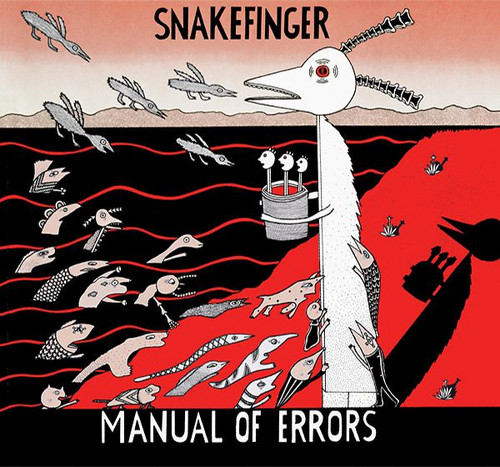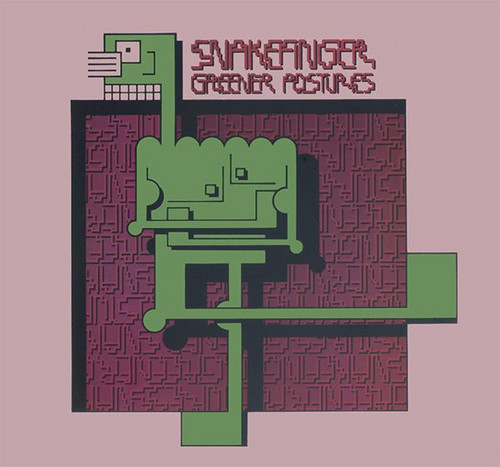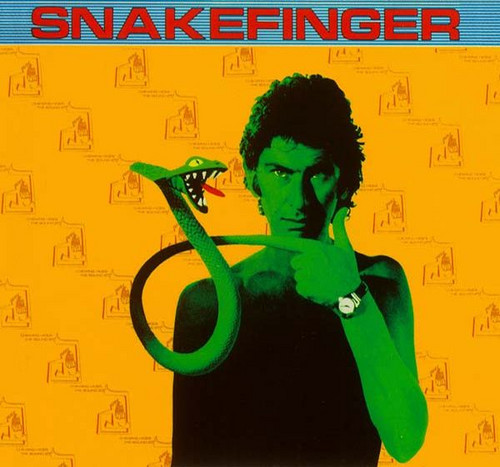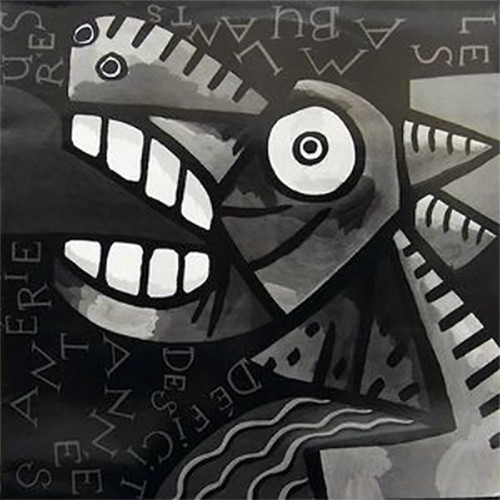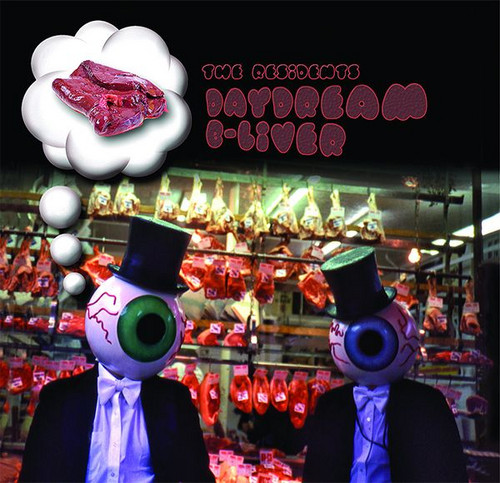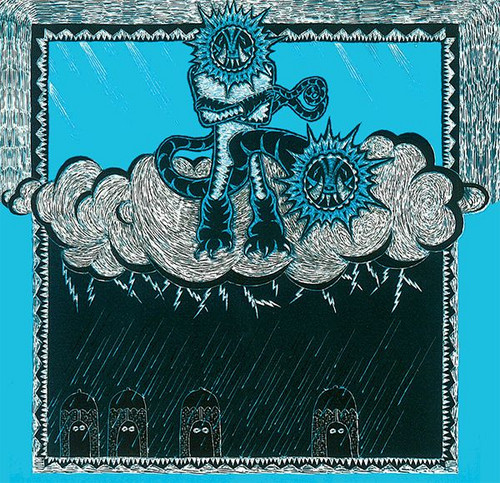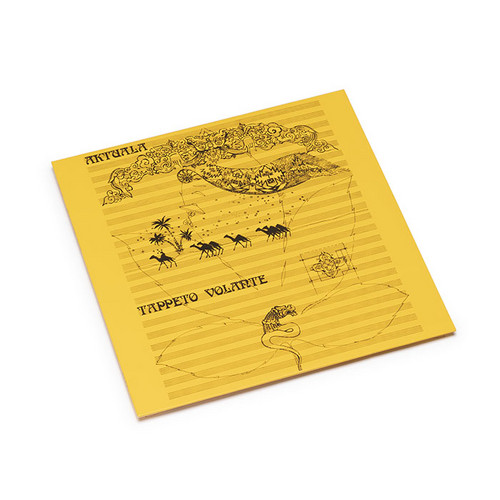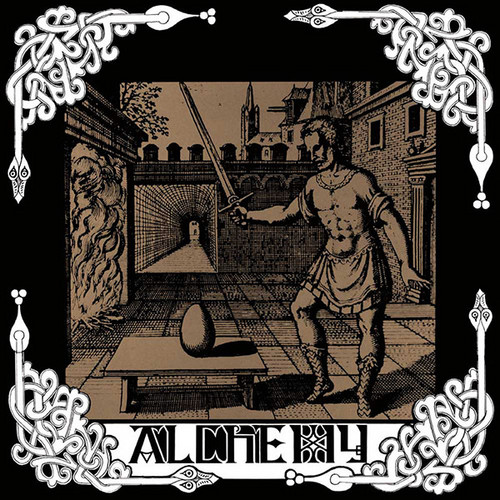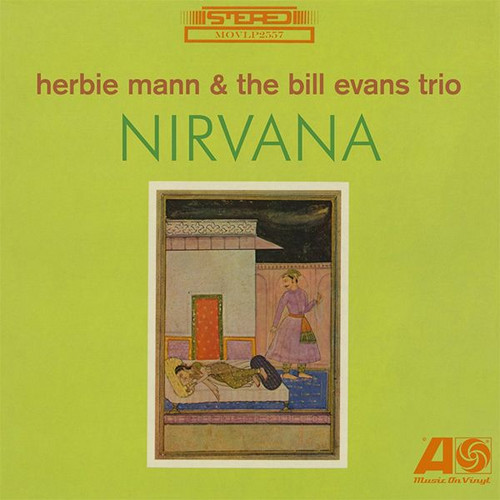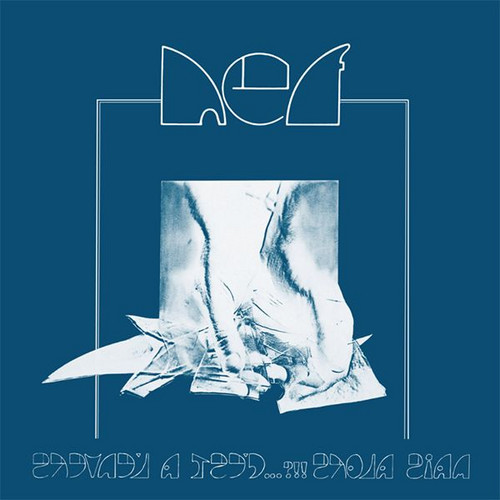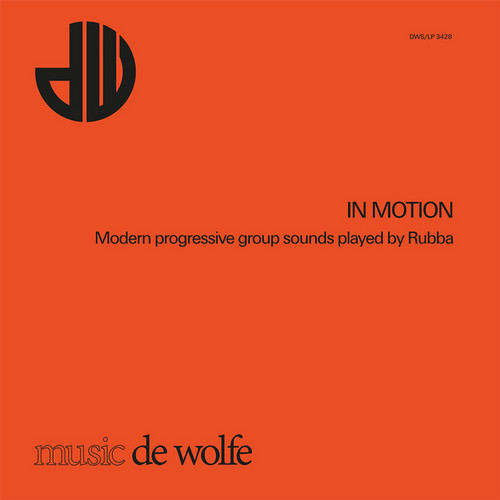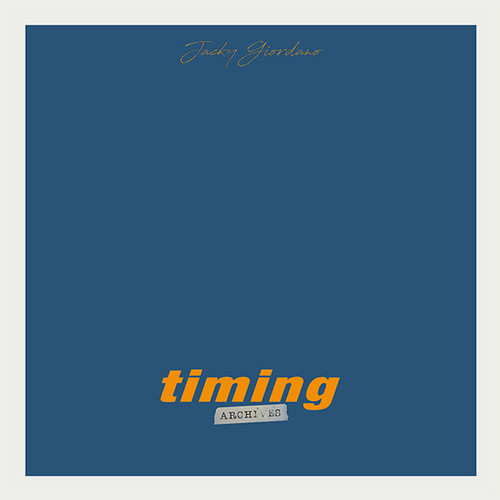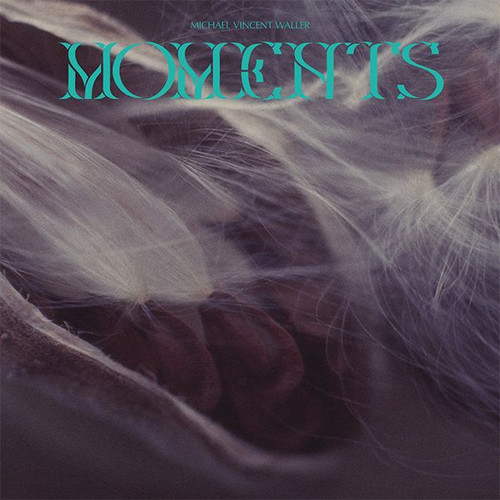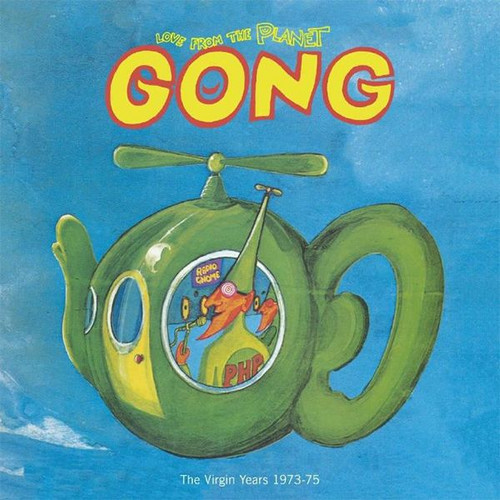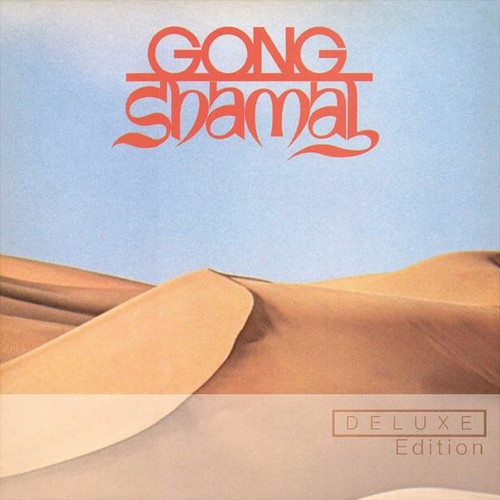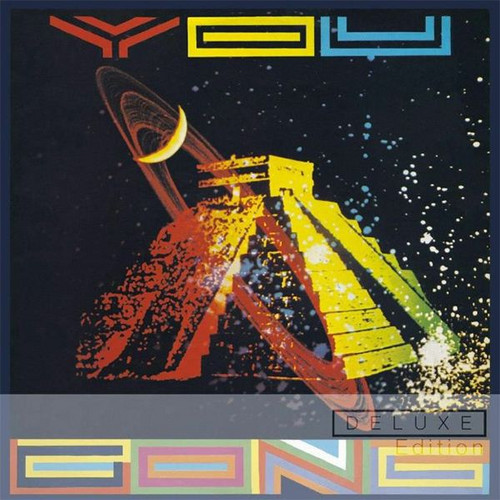Reissues
Manual of Errors
**2019 stock** "Snakefinger surely needs not much of an introduction. Born Philip Charles Lithman in London, he moved to San Francisco in 1971. His roots lie in the British blues scene, but he soon became friends with The Residents who also gave him the name Snakefinger based on a photograph of Lithman performing, in which his finger looks like a snake about to attack his violin. In 1972 Lithman returned to England and formed the pub rock band Chilli Willi and the Red Hot Peppers. After the lack…
Greener Postures
**2019 stock** "Snakefinger surely needs not much of an introduction. Born Philip Charles Lithman in London, he moved to San Francisco in 1971. His roots lie in the British blues scene, but he soon became friends with The Residents who also gave him the name Snakefinger based on a photograph of Lithman performing, in which his finger looks like a snake about to attack his violin. In 1972 Lithman returned to England and formed the pub rock band Chilli Willi and the Red Hot Peppers. After the lack…
Chewing Hides the Sound
**2019 stock** "Philip Charles Lithman aka Snakefinger was born in London, England, and moved to the USA in 1971. He is known for his solo work and for his guitar playing with The Residents. It is said he was given the name 'Snakefinger' by The Residents based on a photograph of Lithman performing, in which his finger looks like a snake about to attack his violin. In 1972 he moved back to the UK to form the blues rock band Chilli Willi and the Red Hot Peppers. Because sales of their second album…
Les ambulants
**2019 stock** Déficit Des Années Antérieures are one of the most important French avant-garde groups ever. Les Ambulants, their second album, came out in 1984 on the band's own Illusion Production label. It is considered a milestone in DDAA's career, establishing their trademark sound and developing further after Action and Japanese Demonstration.For this re-issue, the original album has been complemented with bonus material so that playing time is now around an hour. The original artwork has b…
Daydream B-Liver
**2019 stock** "Daydream B-Liver was released by The Residents' Fan Club UWEB in 1991. It's an assortment of music from the years 1971 to 1991. The oldest material is a recording of a live show at The Boarding House in '71. The Residents were assisted by Snakefinger for the event. Then there are three tracks from the Stars & Hank Forever sessions that were not used on the original album. Daydream In Space was recorded by the band especially for this compilation. It is a nod to Sun Ra and Barry W…
Strange Culture / Rivers of Hades / Haeckel's Tale
**2019 stock** "Strange Culture (OST): In 2007, director / artist Lynn Hershman-Leeson heard of a strange situation of an artist being arrested as a bioterrorist due to the fact that his 'art' used harmless mold. She gathered a number of friends to make a film to bring more attention to the artist's plight. Among the friends were Tilda Swinton and The Residents who had worked with Ms Hershman on her previous film, Conceiving Ada.The Rivers of Hades: an aural art piece, Chaos Is Not Just a Theory…
Snakey Wake
**2019 stock** The Residents met Philip Lithman in 1969. They became immediate friends and began playing music together. Snakefinger participated in many Residents projects with 1986 being a particularly good year for their working together. Plans were made to tour again in 1989, but fate decreed otherwise. While on a European tour, Snakefinger died on July 1st, 1987 in Linz, Austria. He was buried in London, and many of his friends in San Francisco found it difficult to accept a death so far fr…
Title In Limbo + 4 Daze
"OK, we know you all waited for this a very long time, but now the wait is over. We are happy to be able to present you a special two-disc edition of Title In Limbo including the legendary 4 Daze! Many of you have heard about this legendary recording for a long time, now over 35 years after its recording it is made available to the public for the first time.Title In Limbo is an album that was recorded with The Residents in San Francisco in 1981.The bands played a very experimental jam session to…
Tappeto Volante
Yellow Vinyl. Exclusive LP reissue of "Tappeto Volante", third and last one release by Aktuala, replica of the original Bla Bla release. "Tappeto Volante" is the third and last one of this series, made by an 'open musical collective' from milan, a fixed nucleus with many different contributes from guest musicians. As the Third Ear Band have always been inserted in the international prog panorama, the same happened with Aktuala, who were real music pioneers able to blend world, ethnic, jazz and a…
Alchemy
**180 gram vinyl edition is a faithful reproduction of the original 1969 gatefold LP release. It has been re-mastered from the original Harvest master tapes and has been cut at Abbey Road studios for this definitive edition vinyl reissue." Formed in 1968 around a nucleus of Glen Sweeney (percussion), Paul Minns (Oboe), Richard Coff (Violin, Viola) and Ursula Smith (Cello), the Third Ear Band were unique in their exploration of exotic baroque music fused with experimental rock. Signing to Blackhi…
Nirvana
Nirvana is an album by jazz flutist Herbie Mann with The Bill Evans Trio featuring Chuck Israels and Paul Motian. The great jazz pianist Bill Evans rarely recorded with flutists, but this exception marked a great collaboration. The musical synergy between Mann and Evans is amazing, as they always become one on each track. It's a relaxing album, with both some softer as upbeat songs by the four. Fans of either Herbie Mann or Bill Evans will want to acquire this enjoyable record.
Townes Van Zandt
**2024 stock** Townes Van Zandt's third recording is an early guitar-and-voice singer-songwriter classic laden with memorable originals. Start with For the Sake of the Song, an oft-recorded classic here enlivened by tasteful percussion. Move on to a couple of Van Zandt's gritty, death's door laments - Waiting Around to Die (where the ex-con protagonist finds a friend in codeine) and a miner's sad tale, Lungs. Colorado Girl is another in a career-long series of paeans to Colorado, where Van Zandt…
Mais alors!!?... C'est à l'envers
Mais Alors!!?... C’est à l’envers is the first release of new French Label Ici Bientôt (Here Soon ...), launched by Paris Fleamarket’s Record Shop, Geminicricket. On the Menu...: Suspended Time, Unsung Heroes, Hidden Records and Next Door Marvels.In 1983, Nef released their first and only album, Mais Alors!!?... C’est à l’envers. At that point, the band already had a long history, interwoven with that of various musical trends and alternative movements from the late sixties to the early eighties…
Live At Nancy Jazz Pulsations
It was in 1973, on the 14th of October, late in the afternoon; on a pretty Sunday under the Big Top in the heart of the “Parc de la Pépinière”, in Nancy; it was the “premiere”, the world first hearing, and it has so far remained the only one commissioned by composer and trumpet player lvan Jullien, for the first international Nancy Jazz Pulsations festival.In order to complete this work of composition and orchestration, Ivan asked the great Eddie Louiss on organ, and chose to do without a double…
In Motion
L’Illustration Musicale, Sonimage, Técipress-In Editions (Timing), Musax, Freesound, Montparnasse 2000 in France but also De Wolfe and Chappell in England: each and every of these sound library labels have in common to bring out as a legendary spectre the name of Jacky Giordano and his aliases. The use of aliases was a widespread practice in the library music world, and Rubba - chosen for the In Motion album - is just one of the many (along with José Pharos, Jacky Nodaro, Gruppo Sounds, Joachim …
Timing Archives
**500 copies** Timing is a collection of sixteen records intended for audiovisual and media professionals which came out between 1975 and 1977, and initiated by Jacky Giordano who took care of the first six albums. The ten others were developed by Pierre Arvay and nearly all published in partnership with Music De Wolfe.Timing Archives is a 14-tracks LP with plenty of funky breaks and hard grooves, including afro-cuban rhythms, wild jazzy sounds, fuzz guitar, strings, sax, clavinet, flute...
Moments
**600 copies** In essence, the sound of the piano comes in two parts: its attack and its decay. The striking of a hammer is followed by the resonance of a string or strings. (Much the same might be said about the vibraphone, as it happens.) This dual quality of sound comes to mind when listening to Moments by New York-based composer Michael Vincent Waller. Performed by pianist R. Andrew Lee and vibraphonist William Winant, Moments − his third album, following Trajectories (Recital, 2017) and The…
Love From The Planet Gong: The Virgin Years 1973-1975
Curated by Steve Hillage and released with the full involvement of original members, legendary psychedelic surrealists Gong are the subject of a new box set with the release of Love From Planet Gong: The Virgin Years 1973-75. This 13-disc package includes the band’s first four Virgin studio albums, with bonus tracks; previously unreleased, multi-tracked full gigs, the complete John Peel Sessions from 1973 and 1974; previously unreleased quad Pye and Westlake mixes of 1974’s You (re-formatted to …
Shamal - Deluxe Edition
Gong’s fourth album for Virgin Records has been remastered from the original Virgin masters for the very first time by the original producer, Simon Heyworth at Super Audio Mastering and has been expanded with a second disc containing a previously unreleased concert recorded live at the London Marquee in September 1975, plus 3 previously unreleased edits.
You (Radio Gnome Invisible Part 3) - Deluxe Edition
Gong’s third album for Virgin Records has been remastered from the original Virgin masters for the very first time by the original producer, Simon Heyworth, and has been expanded with a live concert recorded at Hyde Park in London in June 1974 plus an alternate version of A PHP’s Advice and a rare version of Where Have All the Flowers Gone?
